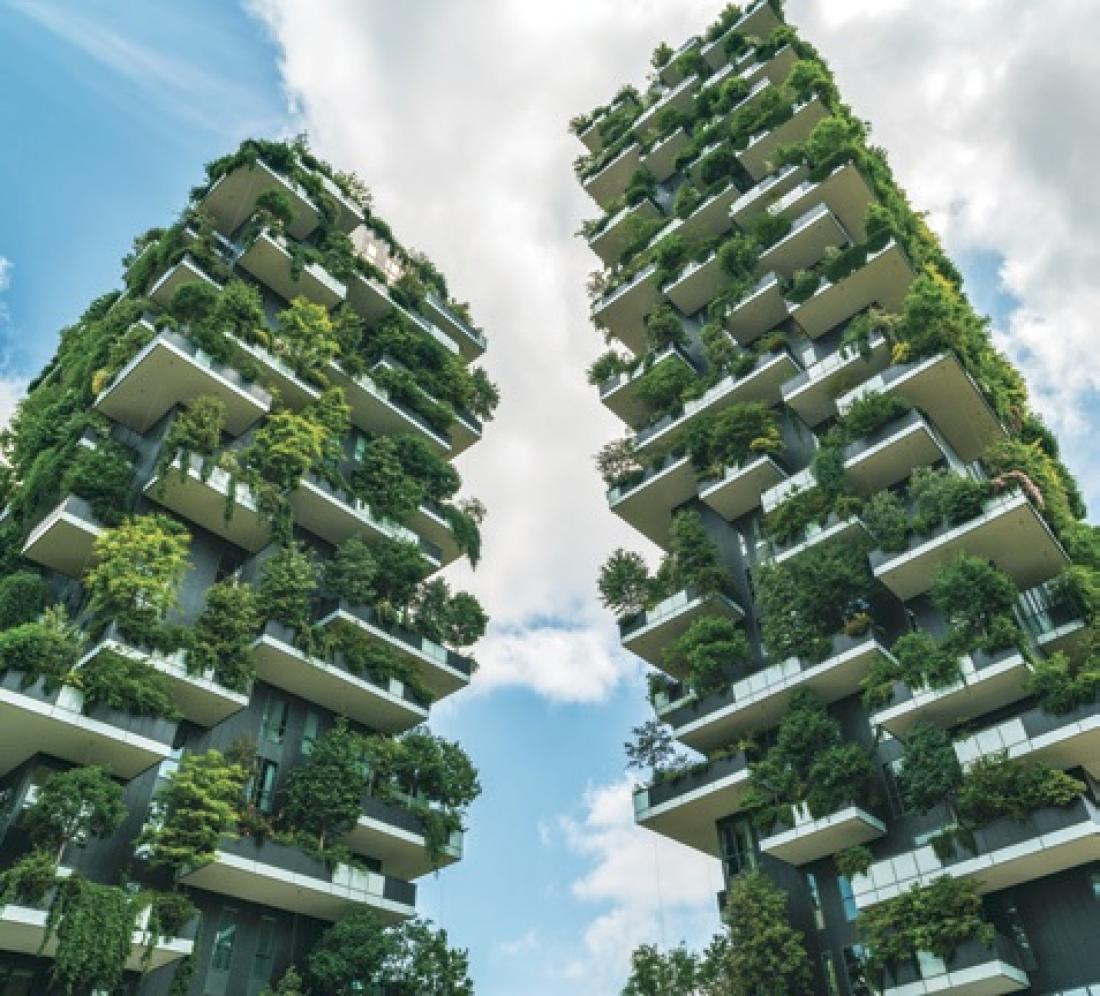In 1967, Singapore’s founding Prime Minister Lee Kuan Yew introduced his ‘garden city’ vision to transform the island-state into a lush, green and clean city. Through the years, Singapore has shaped this dream by planting trees and designing parks that reduce air pollution and surface runoff – and as a result, ‘green buildings’ have become a soaring priority in the country in the past decade.
“A green building works with its natural surroundings to positively impact its occupants and the natural environment,” explains Karen Lee Miao Xuan, who recently finished her Master of Tri-Sector Collaboration at SMU. “It also places a strong emphasis on the efficient use of resources, including energy, water and building materials.”
Karen’s work involves developing the sustainability expertise of a leading global flooring manufacturer. She believes that developing countries in Asia need to follow Singapore’s lead and adopt green building practices and technologies to make their cities more resilient to climate change. This goal, she explains, could be achieved through a platform, established through a tri-sector partnership, for sharing information about green building rating tools, best practices and financial incentives to adopt energy-saving technologies.
“The built environment plays a significant role in contributing to climate change, given its massive energy consumption and carbon emissions,” says Karen. In 2010, for example, buildings accounted for 32% of global final energy consumption and 19% of energy-related carbon dioxide emissions. “But this also means opportunity for us, particularly in Asia: a region with so much potential as long as existing and under-utilised systems are harnessed more efficiently,” she explains.
Setting up the core partnership
In her master’s degree capstone project, Karen describes how she thinks this tri-sector collaboration and informationsharing platform could be established.
From the private sector, it would be crucial to include property developers, leading architecture firms and building-technology companies, as they could share best practices and technological advances in sustainability. Joining the partnership would enable them to showcase various projects, receive recognition for their tireless work to advance the sustainability agenda and increase their competitive advantage in the green building sector.
From civil society, she aims to include green building councils in Southeast Asia, as they could provide the latest information on green building trends and raise awareness among industry professionals on rating tools and certification requirements. Architecture schools in the region could also contribute by highlighting the latest research in this field. Together, these partners would spearhead green design competitions, activities and internships for architecture students.
Finally, from the public sector, government agencies involved in establishing and enforcing Asia’s building regulations would be invited to fill the group in on financial schemes and incentives for green building in their respective countries. By forging partnerships with the private sector, these agencies would be better able to test the effectiveness of their policies on the ground and understand market sentiments.
Setting measurable goals
The partnership will begin with a core group of pioneer members formulating policies for the design, implementation and management of the information-sharing platform. The group will also develop mechanisms for measuring the project’s success and protecting intellectual property rights.
Inviting partners to articulate their respective needs from the collaboration will be key to enhancing trust, transparency and satisfaction. Ideally, small initial wins from the collaborative project would attract more partners to come on board, expanding the platform so it could eventually provide information for the general public about the benefits of living and working in green buildings.
Karen believes the platform could go a long way in addressing seven of the United Nations’ 17 Sustainable Development Goals by promoting affordable and clean energy solutions, inclusive and sustainable industrialisation, responsible consumption and climate change mitigation, among others.
“Ambitious as it might sound, the partnership platform aspires to accelerate the green building movement by spurring significant progress in decoupling economic growth from climate change, poverty and inequality, and contributing towards achieving the sustainable development goals,” Karen writes in her capstone thesis.
For Asian developing countries to embrace green building policies, Karen believes government agencies should only impose minimum standards that lead to the growing uptake of green building practices over time. Private businesses can then voluntarily apply best practices. Karen deduces this by looking at the ‘complexity theory’, which assumes that systems left to function on their own ultimately organise themselves — in this case, a natural movement towards a green building culture. Governments, however, should be seen as leading the way by applying green standards on the facilities they occupy, explains Karen.
“By taking the lead in seeking local green building certifications for public-owned buildings and spaces, the credibility of rating tools will be greatly enhanced, translating to greater confidence and interest from the private market,” she writes. “A polycentric approach towards governance that encourages experimental efforts at multiple levels may be the most effective in addressing the complex problem of the slow move to adopt green building solutions in developing Asia.”



